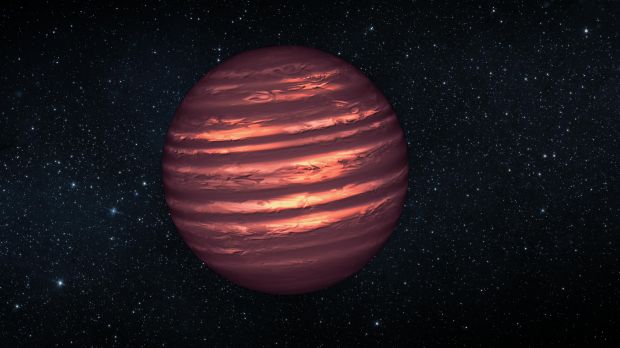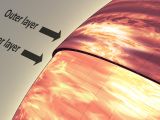Brown dwarfs bridge the gap between small stars and large planets, but are neither entirely. While they don't produce energy, like a star, they were created via the same process as stars.
NASA recently pointed both its Spitzer infrared telescope and the Hubble telescope at one particular brown dwarf, the 2MASSJ22282889-431026, and made some surprising or at least spectacular discoveries.
What they found was extreme weather, like that on a gas giant such as Jupiter, but scaled upwards several times. Massive clouds and storms the size of planets circle the object.
Brown dwarfs are created from gas and dust clouds, just like regular stars are. However, they never managed to gain enough mass to start the hydrogen fusion process which powers stars, remaining inert objects, sometimes called failed stars.
Since they're just giant gas balls, they're similar to gas giants, though, obviously, larger. It's not particularly surprising then to see weather phenomena like those found on gas giants.
NASA's two telescopes were able to peek through the various layers of the atmosphere by looking for infrared light at different frequencies.
The infrared light emanating from inside the brown dwarf is absorbed differently by its upper layers depending on the frequency. This helped scientists create the most detailed weather map of a brown giant to date.

 14 DAY TRIAL //
14 DAY TRIAL // 
